#Queen Catherine Parr
Explore tagged Tumblr posts
Text
20 September: Queen Katherine Parr's Letter in Latin to Princess Mary
20 September: Queen Katherine writes to Princess Mary in Latin about her translation of Erasmus's gospel of St. John.
The official date of the letter is actually confusing. It was either written while Katherine Parr was Queen Regent in 1544 or as Dowager Queen in 1547. The messenger mentioned in the letter is most likely Walter Erle, groom of the Queen’s privy chamber, who also served as her musician on the virginals, but possible Robert Cooch, steward of her wine cellar whose skill in music was commended by…
#1544#1547#20 September#catherine parr#catherine parr letters#henry viii#katherine parr#katherine parr letters#Katherine Parr&039;s Latin Letter to Princess Mary#Katherine Parr&039;s letter to Princess Mary#Princess Mary#princess mary tudor#Queen Catherine Parr#queen consort#Queen Kateryn Parr#Queen Katherine Parr#queen mary i#six wives#tudor
0 notes
Text

TUDOR WEEK 2024
It is baaaaack by popular demand!. We are hosting Tudor Week 2024. This is going to be hosted from Monday the 14th of October to Sunday the 20th of October.
The week will go as follows:
Day 1 - Monday, 14th of October: Your Favourite Tudor (members of the family that were born Tudors). Day 2 - Tuesday, 15th of October: Favourite Tudor contemporary quote about or said by the Tudor family. Day 3 - Wednesday, 16th of October: Best Tudor What If? Day 4 - Thursday, 17th of October: Fancast Your Favourite Tudor Family Member. Day 5 - Friday, 18th of October: Favourite Tudor Iconography (e.g. Tudor Rose, Anne Boleyn's falcon, Jane Seymour's Phoenix). Day 6 - Saturday, 19th of October: Favourite Tudor Couple (could include unmarried couples, e.g., Elizabeth I and Robert Dudley). Day 7 - Sunday, 20th of October: Favourite Tudor-related location.
This can cover all events and media that a Tudor family member is present, so from Owen Tudor to Elizabeth Tudor, and may include spouses and acknowledged children of direct members of the Tudor family (if unsure who we cover please check our Family page). We have attempted to make it as broad as possible and no pressure if you are late with some of the days, we will still reblog.
Previous Years: 2021, 2022, 2023
Be sure to tag your posts TudorWeek2024 and DailyTudors, looking forward to seeing your posts!
The Team at DailyTudors
#tudorweek2024#henry vii#henry viii#edward vi#mary i#elizabeth i#owen tudor#catherine de'valois#edmund tudor#margaret beaufort#jasper tudor#catherine woodville#elizabeth of york#arthur prince of wales#katherine of aragon#margaret queen of scotland#james iv of scotland#archibald douglas#henry stuart#anne boleyn#jane seymour#anne of cleves#kathryn howard#catherine parr#mary queen of france#louis xii#charles brandon#henry fitzroy#announcement
156 notes
·
View notes
Text
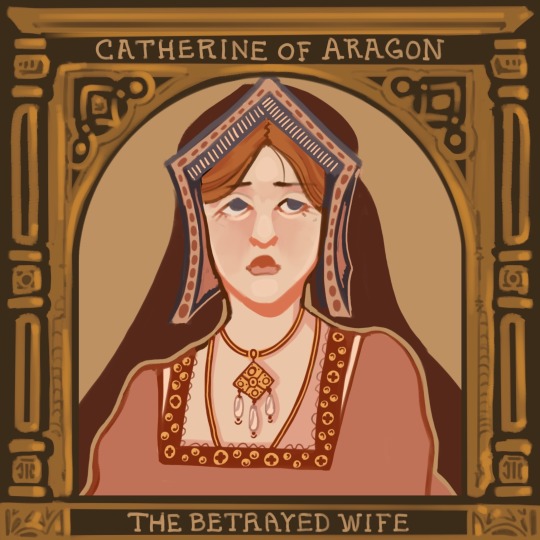



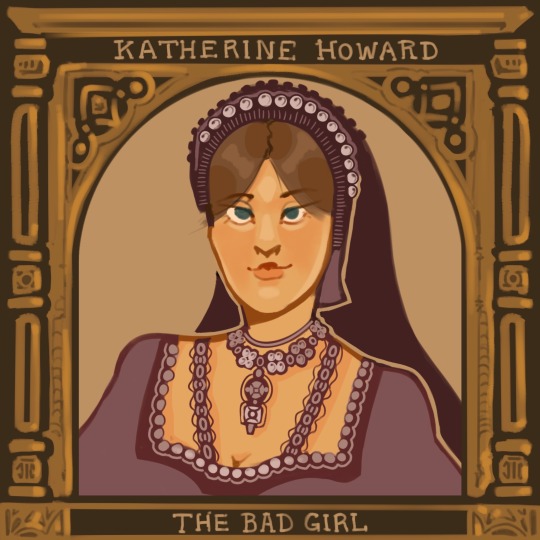
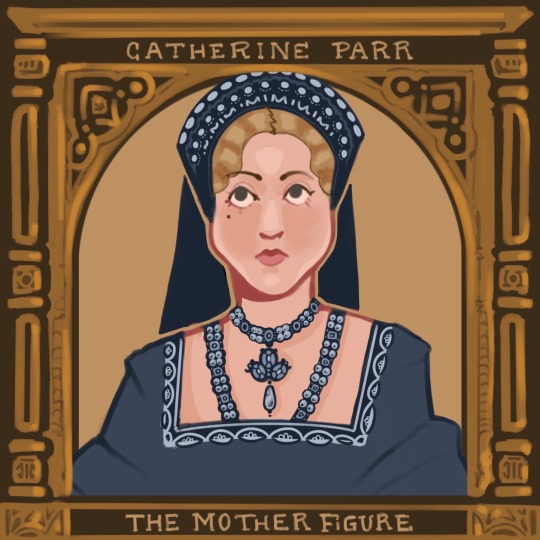
1. Catherine of Aragon (married 1509-1533)
motto: HUMBLE AND LOYAL
Even allowing for tactful hyperbole, it is clear that Catherine, […] did have the kind of youthful prettiness and freshness of appearance that charmed observers, not only the family into which she would marry. It was partly a question of her complexion: her naturally pink cheeks and white skin were much admired in an age when make-up was clumsy in execution, easy to detect and much scorned. Ambassadors abroad, describing princesses to their masters, generally emphasized the tint of the skin, carefully noting whether it was 'painted' or not. A fair complexion like Catherine's was thought to indicate a more serene and cheerful temperament than a 'brown' one. Then Catherine's hair was also fair and thick, with a reddish-gold tint, her features neat and regular in a pleasingly shaped oval face.
Perhaps Catherine's fair colouring, so far from the conventional picture of a dark-visaged Spaniard, reminded onlookers of her one-eighth of English blood: […] 'there is nothing wanting in her that the most beautiful girl should have. '
If her complexion was her chief beauty, Catherine's chief disadvantage was her lack of height. All the grace of her bearing, inculcated over many years at the Castilian court, could not conceal the fact that she was extremely short, even tiny. Years later a loyal defender had to admit that she was 'in stature somewhat mean', while adding quickly 'but bonarly [bonnie] withal'. She was also on the plump side - but then a pleasant roundness in youth was considered to be desirable at this period, a pointer to future fertility. In contrast Catherine's voice was surprisingly low and 'big-sounding' for a woman; and that no doubt contributed to the impression of gracious dignity she left on all observers, making up for the lack of inches.
2. Anne Boleyn (married 1533-1536)
motto: THE MOST HAPPY
Anne Boleyn was not a great beauty. The Venetian ambassador […] pronounced her 'not one of the handsomest women in the world'. […] Anne Boleyn was only moderately pretty.
Some of this lukewarm praise may have been due to the fact that her looks did not accord with the fair-haired, blue-eyed ideal of the time. In theory, dark looks were regarded with suspicion and Anne Boleyn's looks were conspicuously dark: she was 'Brunet' […] Anne Boleyn's olive complexion’ […] her colouring 'rather dark' or sallow 'as if troubled with jaundice', or 'not so whitely as ... above all we may esteem.' She did have a few moles, although she was hardly disfigured by them on the contrary they acted as beauty-spots. Her hair, thick and lustrous as it might be, was extremely dark […] And her eyes were so dark as to be almost black. But then the theory of public admiration was one thing - blondes were supposed to be of cheerful temperament - and the practice of physical attraction was quite another. Clearly in adulthood Anne Boleyn exercised a kind of sexual fascination over most men who met her; whether it aroused desire or hostility, the fascination was there.
The black eyes were sparkling and expressive; and they were set off by those 'dark, silky and well-marked eyebrows' […] on the subject: she knew well how 'to use [her eyes] with effect', whether deliberately leaving them in repose or using them to send a silent message which carried ‘the secret testimony of the heart'. As a result many became obedient to their power. More prosaically, the Venetian ambassador called her eyes "black and beautiful'. Her mouth, described by him as 'wide' (another theoretical disadvantage by the standards of the time), was recorded by Sander as pretty. […] Anne Boleyn was 'of middling stature' (which made her of course a great deal taller than Queen Catherine). She seems to have been quite slight or at any rate not full-breasted - the Venetian ambassador remarked that her bosom was 'not much raised' […]. But a much more important aspect of her appearance when she first came to court was her elegant long neck; this, with the deportment she had learned in France […] gave her a special grace, especially when dancing, which no one denied.
The fresh young damsel had other qualities, some more obvious than others at the moment of her arrival back in England. She had 'a very good wit', wrote Cavendish in his Life of Wolsey, another source not prejudiced in Anne Boleyn's favour? The phrase, going beyond mere intelligence, carried with it connotations of spirit and adventurousness; in other words, Anne Boleyn was good company. Like many spirited people, she had another more impatient side to her: she would display on occasion a quick temper and a sharp tongue. But of these characteristics, deplored in a woman as much as skill at singing and dancing was prized, there was as yet no sign.
3. Jane Seymour (married 1536-1537)
motto: BOUND TO OBEY AND SERVE
From other sources, it seems likely that the charm of her character considerably outweighed the charm of her appearance: […] of middle statute and no great beauty. Her most distinctive aspect was her famously pure white complexion. Holbein gives her a long nose, and firm mouth, with the lips slighty compressed, although her face son a pleasing oval shape with the high forehead then admired (enhanced sometimes by discret plucking of the hairline) and set off by the headdresses of the time. Altogether, if Anne
Boleyn conveys the fascination of the new, there is a dignified but slightly stolid look to Jane Seymour, appropriately reminiscent of English medieval consorts.
But the predominant impression given by her portrait - at the hands of a master of artistic realism - is a young woman of calm good sense. And contemporaries all commented on Jane Seymour's intelligence: in this she was clearly more like her cautious brother Edward than her dashing brother Tom. She was also naturally sweet-natured (no angry words or tantrums here) and virtuous - her virtue was another topic on which there was general agreement. There was a story that she had been attached to the son of Sir Robert and Lady Dormer, a country neighbour, but was thought of too modest a rank to marry him; even if true, the tale brought with it no slur on Jane's maidenly honour. It was told more as a Cinderella story, where the unfairly slighted girl would go on to be raised triumphantly to far greater heights. Her survival as a lady-in-waiting to two Queens at the Tudor court still with a spotless reputation may indeed be seen as a testament to both Jane Seymour's salient characteristics - virtue and common good sense. A Bessie Blount or Madge Shelton might fool around, Anne Boleyn might listen or even accede to the seductive wooings of Lord Percy: but Jane Seymour was unquestionably virginal.
In short, Jane Seymour was exactly the kind of female praised by the contemporary handbooks to correct conduct; just as Anne Boleyn had been the sort they warned against. There was certainly no threatening sexuality about her. Nor is it necessary to believe that her 'virtue' was in some way hypocritically assumed, in order to intrigue the King […]. On the contrary, Jane Seymour was simply fulfilling the expectations for a female of her time and class: it was Anne Boleyn who was - or rather who had been - the fascinating outsider.
4. Anne of Cleves (married 1540-1540)
motto: GOD SEND ME WELL TO KEEP
Let us take the actual appearance of Anna of Cleves first: for this we are fortunate in having a first-hand description, written only a few days later by the French ambassador, Charles de Marillac, who was not prejudiced in either direction, towards her beauty or her ugliness. Anna of Cleves looked about thirty, he wrote (she was in fact twenty-four), tall and thin, 'of middling beauty, with a determined and resolute countenance.' The Lady was not as handsome as people had affirmed she was, nor as young […], but there was a steadiness of purpose in her face to counteract her want of beauty.
The 'daughter of Cleves' was solemn, or at any rate by English standards she was, and she looked old for her age. She was solemn because she had not been trained to be anything else and the German fashions did little to give an impression of youthful charm in a court in love as ever with things French, or at any rate associating them with fun and delight. […] Turning to Holbein's picture, one finds this solemnity well captured: a critic might indeed term it stolidity. Besides Wotton, in his report, had confirmed that Holbein, generally regarded as the master of the 'lively' or lifelike (not the flattering) in his own time, had indeed captured Anna's "image' very well.
Of course a beautiful young woman, however stolid or badly dressed, would still have been acceptable. Anna of Cleves was not beautiful, and those reports which declared she was were egregious exaggerations in the interests of diplomats […]. But was Anna of Cleves actually hideous? Holbein, painting her full-face, as was the custom, does not make her so to the modern eye, with her high forehead, wide-apart, heavy-lidded eyes and pointed chin.
There is indirect evidence that Anna of Cleves was perfectly pleasant-looking from the later years of Henry VIII. When Chapuys reported Anna of Cleves as rating her contemporary, Catherine Parr, 'not nearly as beautiful' as herself, this expert observer did not choose to contradict her; so that the boast was presumably true, or at least true enough not to be ridiculous.
5. Katherine Howard (married 1540-1542)
motto: NO OTHER WILL BUT HIS
No confirmed authentic picture of Katherine Howard survives. The fact that Katherine Howard is the only one of Henry VIII’s wives for whose appearance we must rely properly on contemporary descriptions, gives her career an appropriately evanescent quality. The same mistiness surrounds her date of birth. She was eighteen or nineteen when the King’s roving eye first fell upon her: that is, roughly thirty years younger than he was. […] Katherine was not only small, as Catherine of Aragon had been, but diminutive: parvissima puella – a really tiny girl. If King Henry was about thirty years older than Katherine, he must have been well over a foot taller. We need not speculate further about their respective weights. The French ambassador rated her beauty as only middling (the same phrase he had used for Anna of Cleves, incidentally), but he did praise her gracefulness, and he found much sweetness in her expression; her habit of dressing à la française (as opposed to Anna of Cleves’ Germanic fashions) no doubt commended itself to him.
Even if Katherine Howard was not a beauty, she must have had considerable prettiness and obvious sex appeal (as well as – or perhaps because of – her youth) since we know that she captivated the King instantly.
6. Catherine Parr (married 1543-1547)
motto: TO BE USEFUL IN ALL I DO
The woman who brought about this cheerfulness, the new Queen Catherine Parr, was herself never described by anyone as a beauty: even the term ‘of middling beauty’ used for both Anna of Cleves and Jane Seymour by Marillac was not applied in this case. ‘Pleasing’ and ‘lively’, ‘kind’ and ‘gracious’ were the most flattering epithets ascribed to her. It is true that a difference of age and status may have been responsible for this lack – widows of over thirty were not expected to be beauties – but when Anna of Cleves indignantly exclaimed that the new Queen was ‘not nearly as beautiful as she’, Chapuys, passing on the comment, did not see fit to contradict it.
Queen Catherine Parr’s only known authentic likeness, attributed to William Scrots, shows an amiable face rather than an intriguing one; the nose is short, the mouth small, and the forehead broad rather than domed in the way that contemporaries admired. Her hair was rather similar in colour to that of Catherine of Aragon: light auburn, tinged with what Agnes Strickland in the nineteenth century would call ‘threads of burnished gold’.
But if the new Queen Catherine was not a beauty, she was neither dull nor austere. She enjoyed dancing. […] She was well set up – the tallest of King Henry’s wives – and her height would have enabled her to cut a regal figure since her conception of her role as queen consort also included a great deal of ornate dressing-up.
Bibliography:
- Fraser, Antonia. The Six Wives of Henry VIII. New York Knopf, 1993.
#henry viii#princess catherine#catherine of aragon#anne boleyn#queen anne#jane seymour#anne of cleves#katherine howard#catherine parr#procreateart#digitaldraw#digitalillustration#renaissance#medieval#english history#monarchy#the tudors#king henry viii#quotes#illustration#england
244 notes
·
View notes
Text
random thought bc I've been listening to Six on repeat: the queens claim that the only reason they're remembered is because of Henry, but would Henry be one of the most iconic and well-known English monarchs if not for them?
#like his defining trait is sorta 'bloke who had six wives who he treated pretty badly all told' plus the whole church of england thing#which arguably would have happened anyway in some sense since protestantism was sweeping europe but is generally credited to him wanting#a divorce whether thats accurate or not#yes he was quite charismatic etc but there were plenty of others who were too or at least interesting#like nobody talks about the guy who was Probably murdered in a framed hunting accident#or the one who was executed by having a red hot poker rammed up his arse#or the one who dies after gorging himself on strawberries and eel pie iirc#ok fine maybe i only remember the memorable daeths but you get the point#the six wives are what made henry viii significant is what i'm saying#via shitposts#six#six the musical#tudors#tudor queens#catherine of aragon#anne boleyn#jane seymour#anne of cleves#katherine howard#catherine parr#henry viii
300 notes
·
View notes
Text



Survived
#Catherine Parr#House of Tudor#Henry VIII#English history#16th century#Henry's last Queen#royal portraits#monarchy#survived#Tudor England#jewellery#courtly dress#UK
22 notes
·
View notes
Text
Manhwa characters X Henry VIII and the six wives crossover.
of course this isn't going to line up with the real history, they'll simply be put into the roles they suit best and alternations will be made based on source material and their personalities
Henry VIII-Ceasre de como
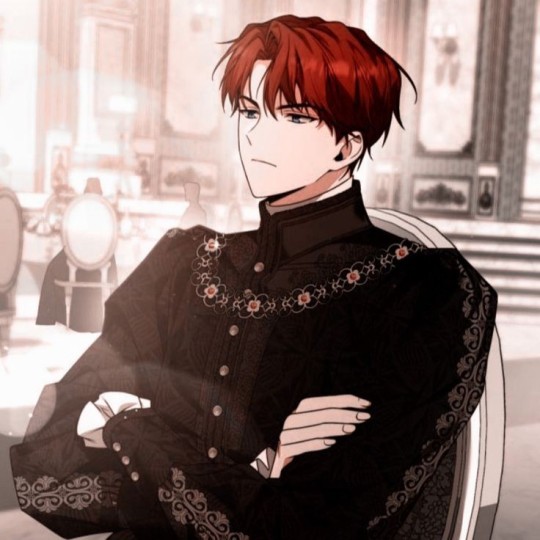
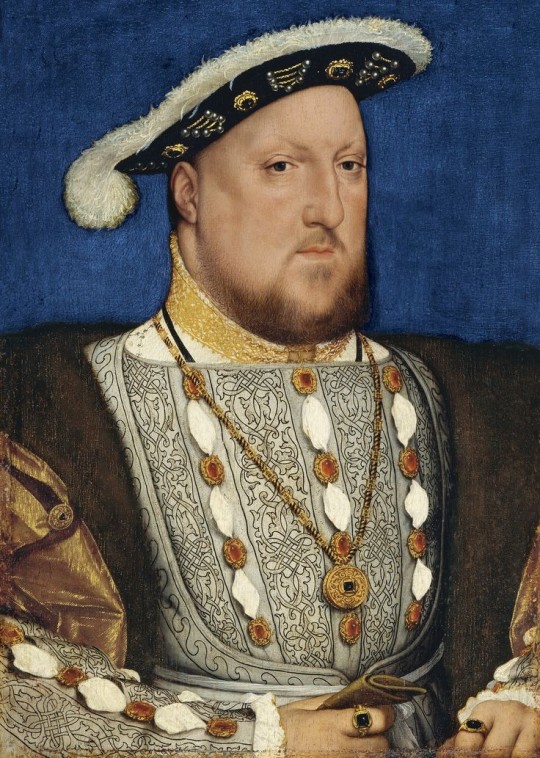
He was never meant to inherit the throne until his brother unexpectedly passed away. The infamous bastard son who was the true cause of prince Alfonsos death believed to be a tragic result of illness. He framed the crime of poisoning the king on his mistress Ariande de mare and marries his late brothers widow as his first wife Isabella de Mare who has only been able to have one child: a girl, Princess Giovanna. Over the course of his life, King Ceasre marries a total of 6 different women and has only had 3 legitimate heirs throughout his life. During his reign, he ignited the fear and hatred of his people through execution after execution, some of the most infamous being 2 of his 6 wives. It was said that on his death bed, all the women he betrayed had haunted him, with the ringleader being his first love, Ariande de Mare
Catherine of Aragon-Isabella de Mare
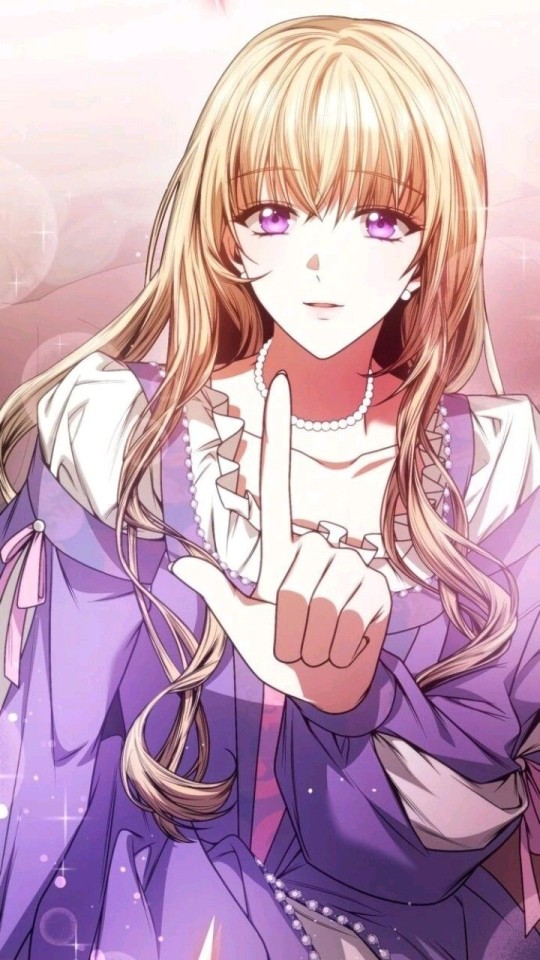
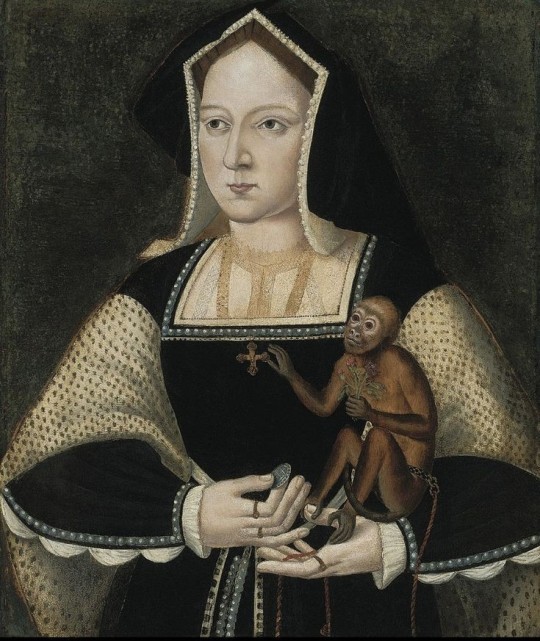
Ceasres first wife, Ariandes sister and widow to prince Alfonso. After marrying for a second time small problems erupt from the queen being known as "tainted" for being another kings wife. To mediate the anger, Isabella starts to take religion even more seriously then she did in the past making herself out as a saint who redeemed herself of her sins, the public is unaware she cares very little for the death of her sister. The queen is aware of her husband's concubines and doesn't mind as she knows he would grow bored of her... until Ceasre finds a woman he can't yet have.. so she schemes to stay on the throne. She didn't help orchestrate her sisters death just so Ceasre can go as far as to violate parliament to marry another woman.
She is not remembered so fondly though after her death.
Anne Boleyn- Aria Roscent:
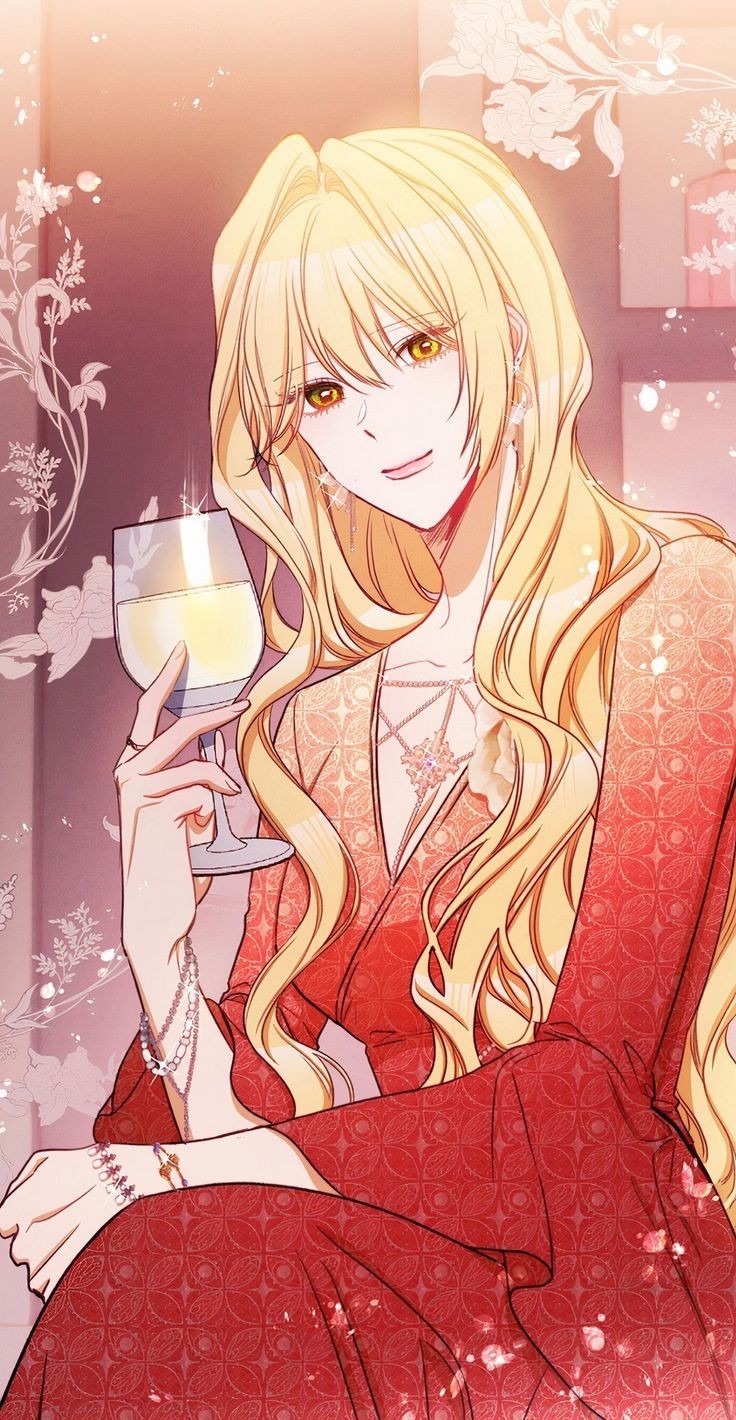
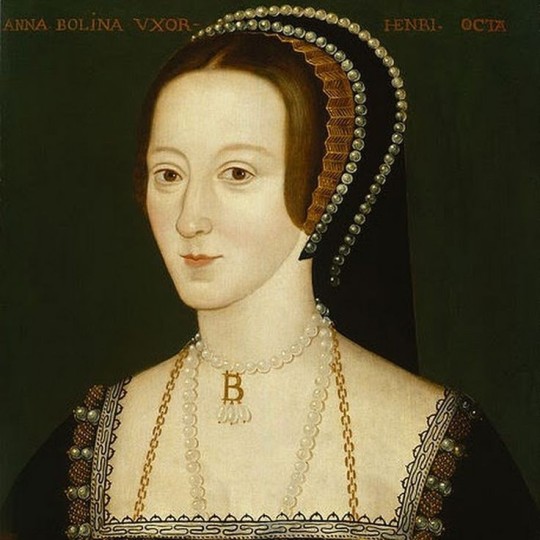
a common woman adopted into the house of Roscent, despite that fact she has become the talk of the town for her beauty and sharp tongue. Aria was planning on marrying her true love Oscar Frederick until she met the king who wanted her as his mistress more than anything, she tried to turn him down the best she could without facing execution, ultimately coming up with a excuse that she'd only be with Ceasre if she became the queen. To which Ceasre happily does much to the anger of queen Isabella who never would've have guessed it would be a random noblewoman instead of Ceasres favorites. Isabella fights back with the pope on her side using the argument the remarriage is reserved only those who have been widowed, this proves to be Isabellas undoing however when Ceasre shoots back with the revelation that the queen had killed her little sister years back and she would do the same to Princess Giovanna if she stayed. The divorce also leads to Ceasre founding his own church and new rules of religion so no pesky pope will stop him in the future, he marries Aria for only 3 years, during those 3 years Aria gave birth to a girl and named her Arabella to spite the former queen but her happiness is shortlived once Ceasre gets tired of her and executes her on crimes of witchcraft and attempted poisoning of his sister in law, Mielle.
Jane Seymour-Jennette Margarita


The 3rd wife Ceasre married quickly after the execution of Queen Aria. Despite her gentle care and kind attitude, the populace despised Jennette for replacing Aria as queen. Jennette is more obedient than the last two queens, going by a motto of "bound to obey and serve." So it's not surprise that Ceasre chose her to be the lucky wife to bear San Carlos desired prince. The relationship with her step-sisters isn't great either. Giovanna wants nothing to do with anymore step-moms after what happened to her mother and Arabella is still too young to even comprehend what happend to her own mother, leaving Jennette alone with the hope of her unborn child being a boy that could save her from execution. Much to Ceasres joy, Jennette does give birth to a prince Leo, but unfortunately the 3rd queen passes away just 11 days later from child bed fever.
Anne of Cleves-Adelaide Kotrov
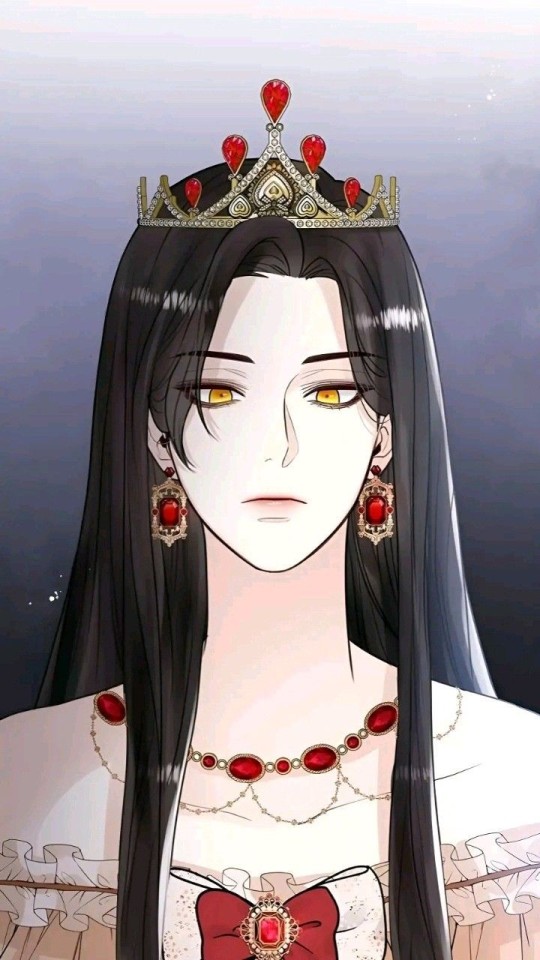

A foreign princess from a neighboring kingdom. With a male heir finally secured, Ceasre is encouraged to marry for a political alliance, most princesses reject the offer after knowing what happened to Queen Aria but with the forceful hand of her mother, Adelaide of Kotrov is sent to become Ceasres 4th wife. The introduction doesn't go as well as planned, with Adelaide being visibly uncomfortable and annoyed with her husband's attitude. Since Ceasre can't execute a foreign noble, he never consummated the marriage and divorced Adelaide in only 6 months. Instead of becoming enemies though, Adelaide and Ceasre managed to get along just enough during those 6 months to be considered friends and Adelaide stayed in San Carlo with the reputation of the kings beloved sister. She lives her days with her lover Lionel as her true love and becomes the richest woman in all of San Carlo after Ceasre dies.
Catherine Howard- Rashta Ishka.

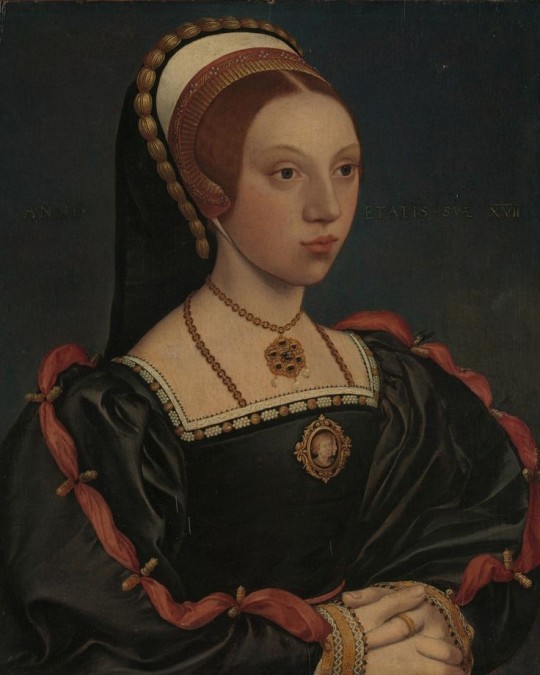
Ceasres 5th and youngest wife. A former slave who was saved by another Emperor and worked as a secretary for the Empress Navier. Rashta was never given a proper education so when the work turned out to be more than she could chew, Ceasre took the opportunity to take her with him to enjoy the luxuries of regal life and gave Rashta a title of Viscountess so the nobles of San Carlo wouldn't learn of her true origins. By the time they got married Ceasre was already considerably aged, his daughters have grown and Prince Leo had been getting smarter by the day. Giovanna treated her step-mom with indifference but Arabella and Leo took to their new mother well, giving Rashta a chance to heal from past traumas but her attitude can make it difficult at times as she holds grudges and doesnt easily let things go. Problems would inevitably arise , with unchecked trauma of her past, Ceasre only wanting a spare from her, pushing everyone else that could help her away, yet with her desire to feel seen at the same time. The queen gets coerced and manipulated by another man: Duke Ergi and he takes the chance to screw her over once he got what he wanted from her. Rashta was only queen for a little over a year when she was discovered to have been assaulted by one of her masters leading to a pregnancy no one knew of, and a previous fling she had with Emperor Sovieshu, combined with the rumors that she had cheated on the king, Rashta is beheaded for her crimes. Before her execution she ran after Ceasre, pleading her innocence while being pulled away.
Catherine Parr-Claudine Von Brandt
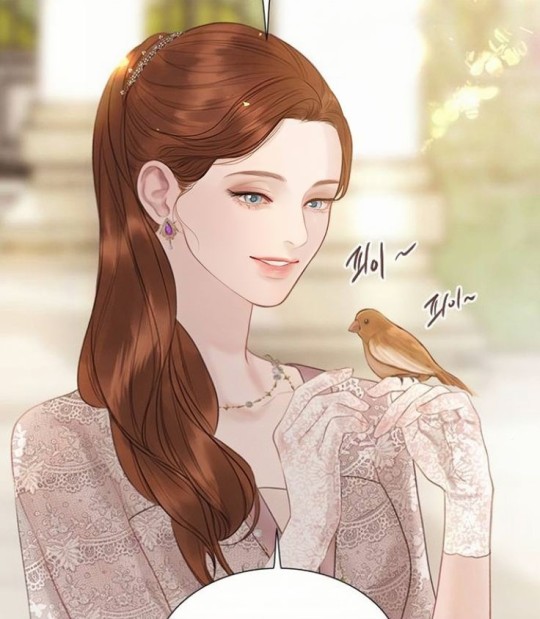
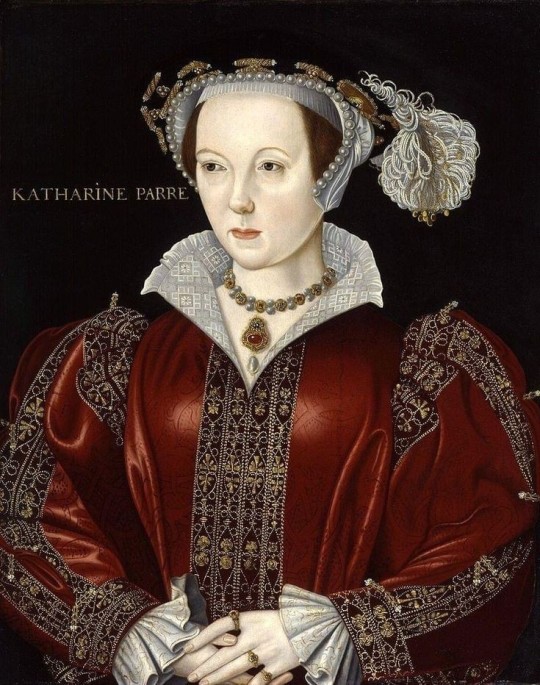
Ceasres 6th and final wife. Claudine had initially been with a few other lovers but all have either died or left her before the marriages could even happen. When she is told that she has to marry the king, Claudine naturally freaks out knowing the fates of the previous 5 wives who got divorced at best and lost their heads at worst. She learns to live her life with her aging tyrannical husband and becomes a wonderful stepmother to the kids, even Giovanna was willing to give her a chance and accept Claudine as her stepmother and queen of San Carlo after Claudine convinced Ceasre to reinsert his daughtes back into succession. There were a few close calls but Claudine survived her marriage and outlived Ceasre, but only for a year longer...
Mary I-Princess Giovanna


(There's no cannon design for Giovanna yet so I used Athy as a substitute)
The first princess born of King Ceasre and Queen Isabella. Out of all her parents failed pregnancies, Giovanna survived as a healthy child despite being a girl. Her parents treated her well enough until her father had the hots for Aria and divorced her mother. Even after learning the truth, Giovanna still considered Isabella the rightful queen even if she was left with a permanent uneasiness of her mom. For most of her time as princess afterwords, Giovanna is demoted to a lady to make room for Arias baby but despite that, Giovanna is a good big sister and doesn't blame Arabella for her mother's fate especially after the second princess is demoted to lady after Aria is executed. After her father dies, Giovanna went through hell to ensure she'd remain a queen and bring back the influence of the pope even if it means the death of the cousin used as a political pawn and the execution of just under 300 people. She dies without an heir only 5 years later.
Elizabeth I- princess Arabella
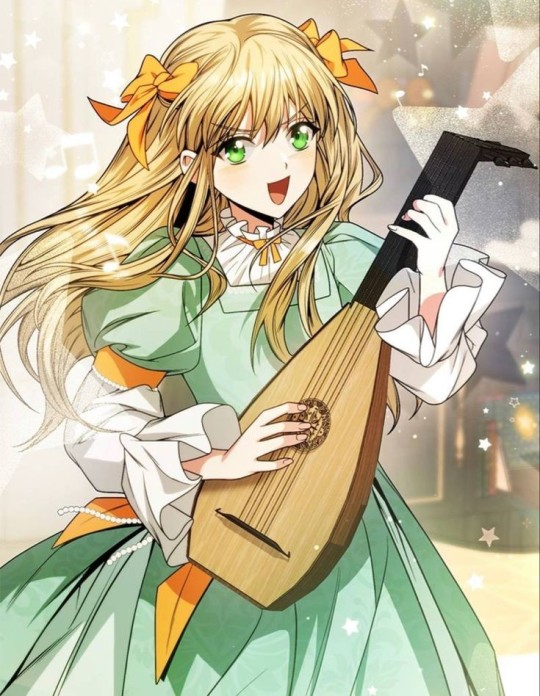

Second princess and daughter of King Ceasre and Queen Aria. Poor Arabella was already made a bastard after her mother's execution and lived her life neglected by her father and raised by her older sister. She was named after the 1st queens youngest sister and it's often noted that the princess looks an awful lot like the girl she was named after, almost like she was the reincarnated soul of Arabella de Mare. Her family life is full of nothing but troubles, even after her tyrannical father dies, she's still left in the whims of her sister as their relationship deteriorates when they got older. For years princess Arabella dodged death at every corner until Queen Giovanna passed away, giving rise for the queen no one suspected, Arabella I. She becomes the virgin queen of San Carlo, ending her father's bloodline and granting the right of heir to a cousin when she passes away as the final monarch of the house of de Como.
Edward VI- Leo IV


(Again, Leo doesn't have a design since he's an OC so young Ceasre will be a substitute)
The long sought after male heir Ceasre had been waiting for and the son of Queen Jennette, he takes after his father in terms of appearance too! As such Leo was raised differently then his sisters and was pushed to the bone since he was the only shot they had for a future king of the de Como bloodline. When Leo became king at the young age of 9, he was easily influenced by the adults and advisors in his life to control the country how they wanted to. He's just a kid and already the people think he'll just turn out to be like his father. Despite how much he loves his sisters, they disagree on religion and in an attempt to keep Giovanna from bringing back influence of the pope, he selects a cousin as his heir just before he dies young, he can finally meet the mother he's never known...
Other characters below:
Prince Arthur- Alfonso de Carlo

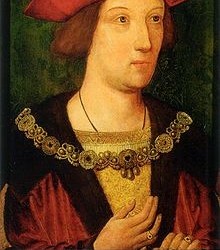
Jane Boleyn- Mielle Roscent


George Boleyn- Cain Roscent
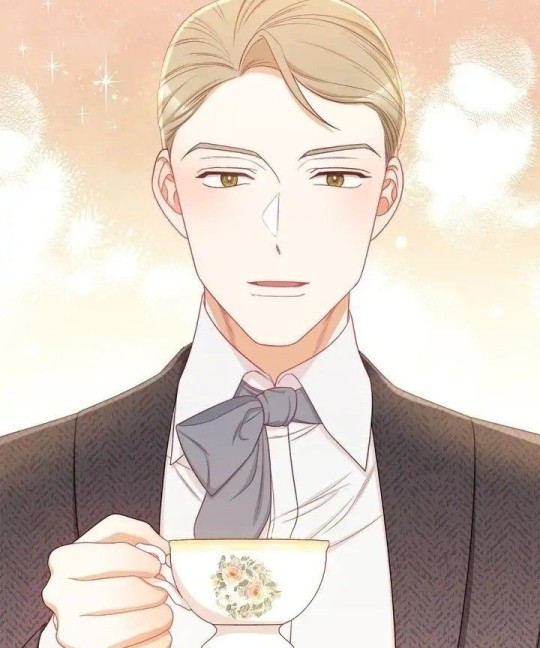

Mary Boleyn- Larissa De Balloa

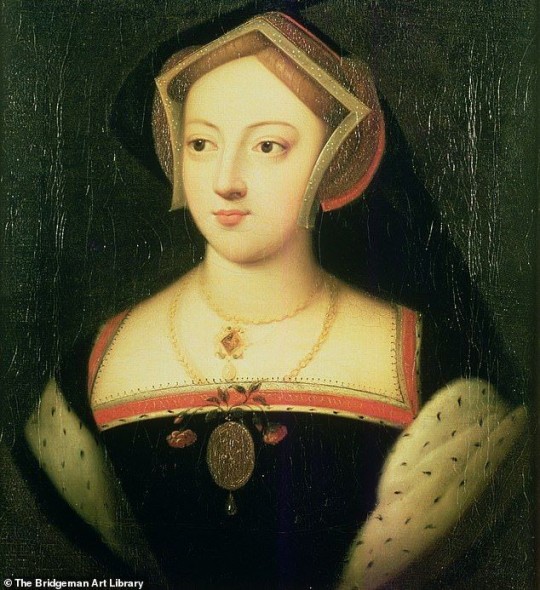
Thomas Culpeper- Duke Ergi

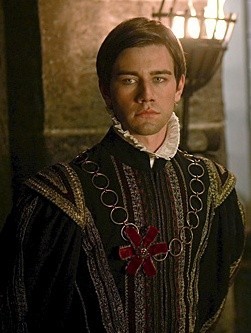
#henry viii#the six wives of henry viii#catherine of aragon#anne boleyn#jane seymour#anne of cleves#catherine howard#catherine parr#the remarried empress#sister i am the queen in this life#who made me a princess#i abdicate my title of empress#the villainess reverses the hourglass#tudor history#the tudors#cry or better yet beg
28 notes
·
View notes
Text










Six The Musical as Tweets pt40
#six#six the musical#anne boleyn#catherine parr#catherine of aragon#anna of cleves#anna von kleve#jane seymour#catalina de aragon#anne of cleves#maggie on the guitar#maud on the rhythm guitar#joan on the keys#elizabeth i#elizabeth tudor#queen Elizabeth i#six the twitter#six the musical twitter#six twitter#twitter#margaret Wyatt#margaret lee#maud lane#maud parr#joan astley#joan meutas#henry fitzroy#little hank
27 notes
·
View notes
Text
it's not Henry VIII and his six wives
it's actually Catherine Of Aragon, Anne Boleyn, Jane Seymour, Anne Of Cleves, Catherine Howard and Catherine Parr
six women who were casually married to the same guy
#tudor queens#tudor dynasty#catherine of aragon#anne boleyn#jane seymour#anne of cleves#catherine howard#catherine parr#henry viii
77 notes
·
View notes
Text
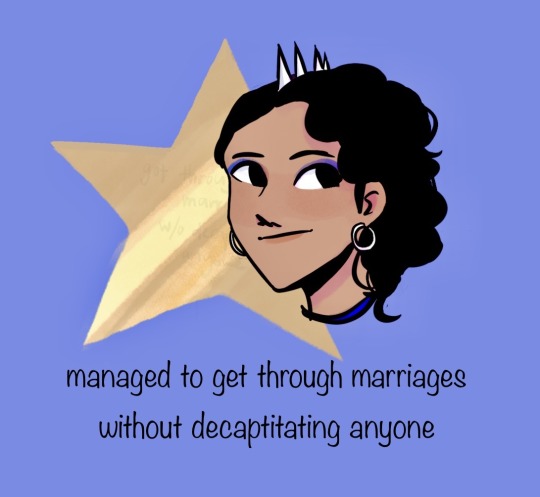
gold star for cathy parr!
#sjdhdjdhdhhfhf found a vid of sydney parr and immediately dropped everything to draw this!#six the musical#six the musical fanart#catherine parr#every time i go back and do canon stuff i lowkey imagine being 14 again like this was the exact brush i used akshdjdhd#it's like. internally i am kicking my feet and giggling but also simultaneously expecting to be told 'oh grow up'#but like canon wise i love the idea of it being a fake competition. like. the queens all plotting and scheming out the show#i love the hc which is just that. they are all incredibly cleverer than they make themselves out to be in the show!#if i have time#i'd love to draw them all making the show. the behind the stage stuff#i think the closest thing i got to that was making fake insta lives for the characters HAHA#this is so so self indulgent. i love her
170 notes
·
View notes
Text
Royal Reads: Jan-Mar 2024
Note: Some of the following links are affiliate links, which means I earn a commission on every purchase. This does not affect the price you pay.
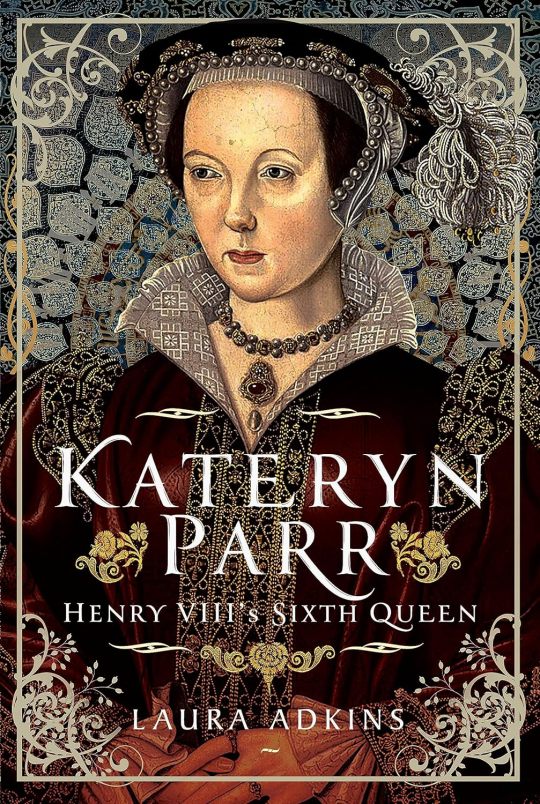

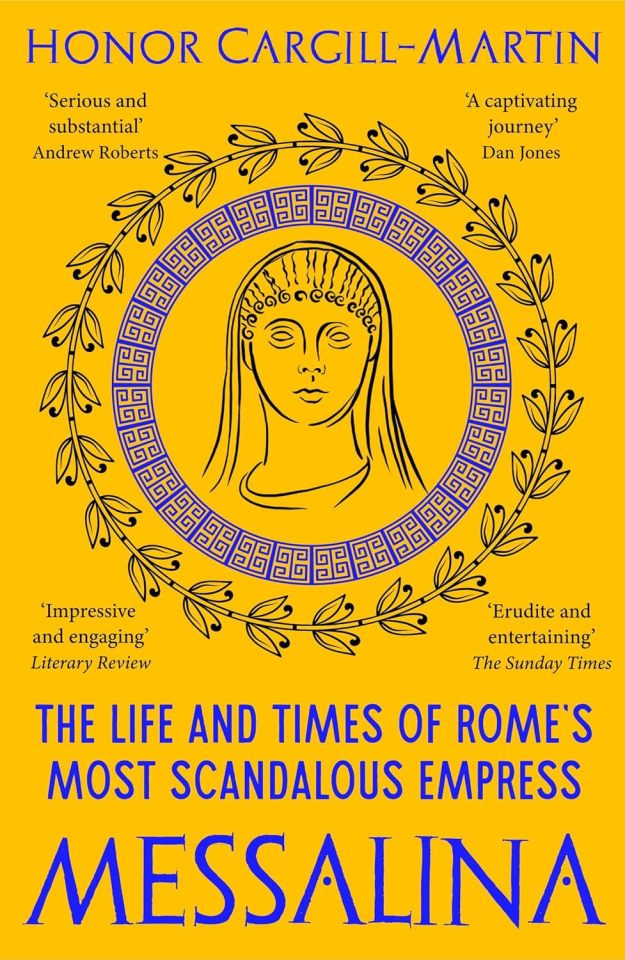
Kateryn Parr: Henry VIII's Sixth Queen by Laura Adkins (Mar. 15, 2024) // Anne Boleyn & Elizabeth I: The Mother and Daughter Who Changed History by Tracy Borman (new paperback version published Mar. 7, 2024) // Messalina: The Life and Times of Rome’s Most Scandalous Empress by Honor Cargill-Martin (Mar. 14, 2024)
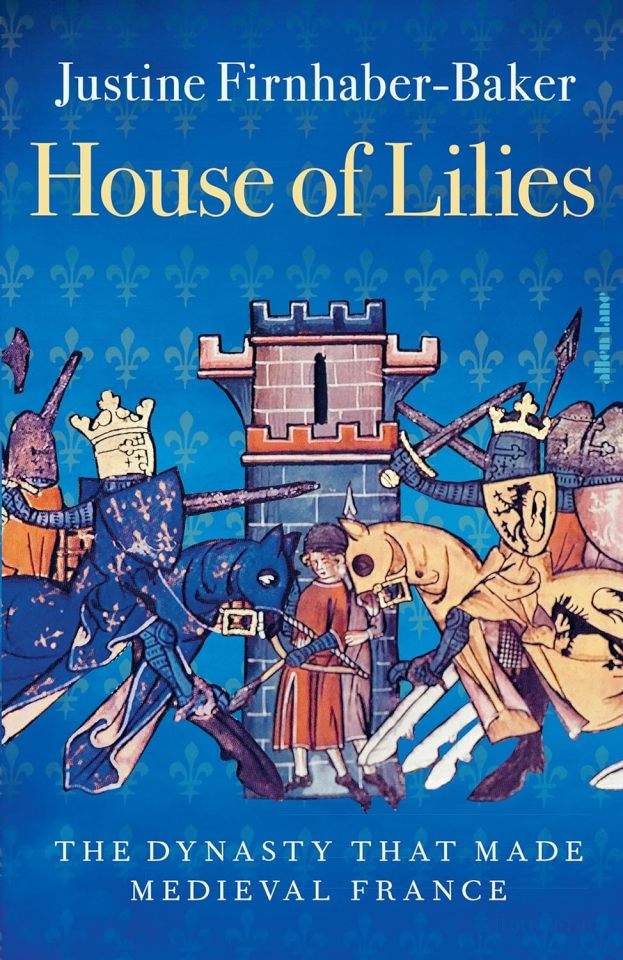
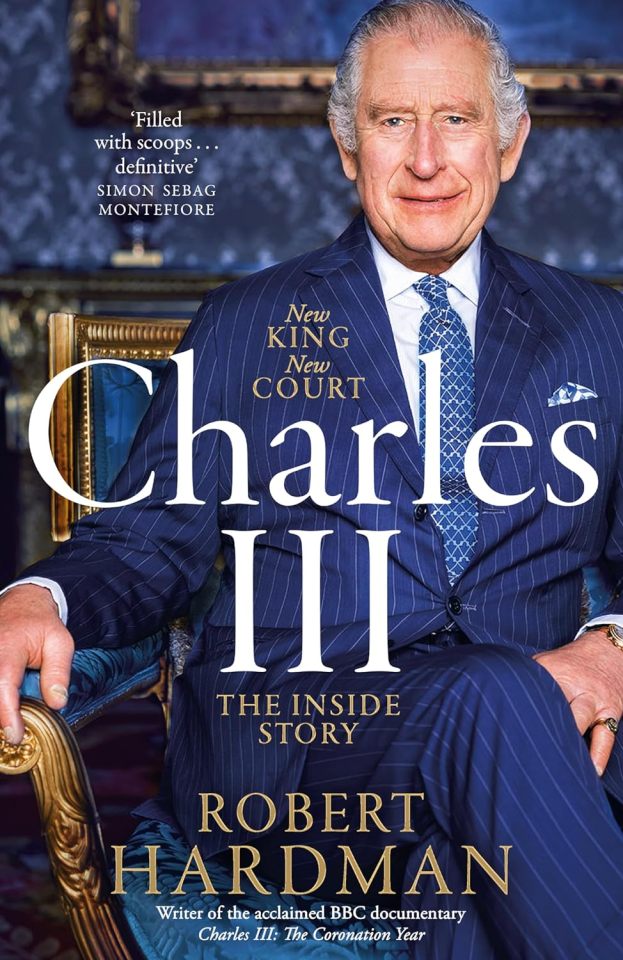
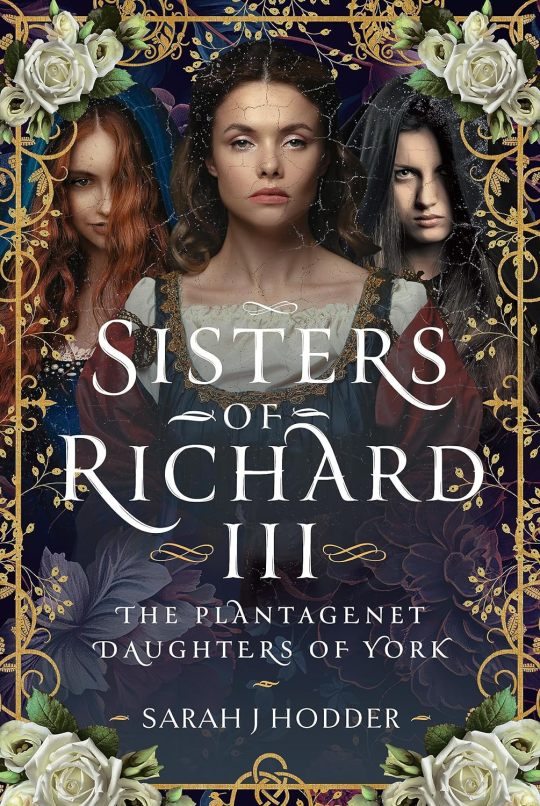
House of Lilies: The Dynasty that Made Medieval France by Justine Firnhaber-Baker (Mar. 28, 2024) // Charles III: New King. New Court. The Inside Story. by Robert Hardman (Jan. 18, 2024) // Sisters of Richard III: The Plantagenet Daughters of York by Sarah J Hodder (Mar. 15, 2024)
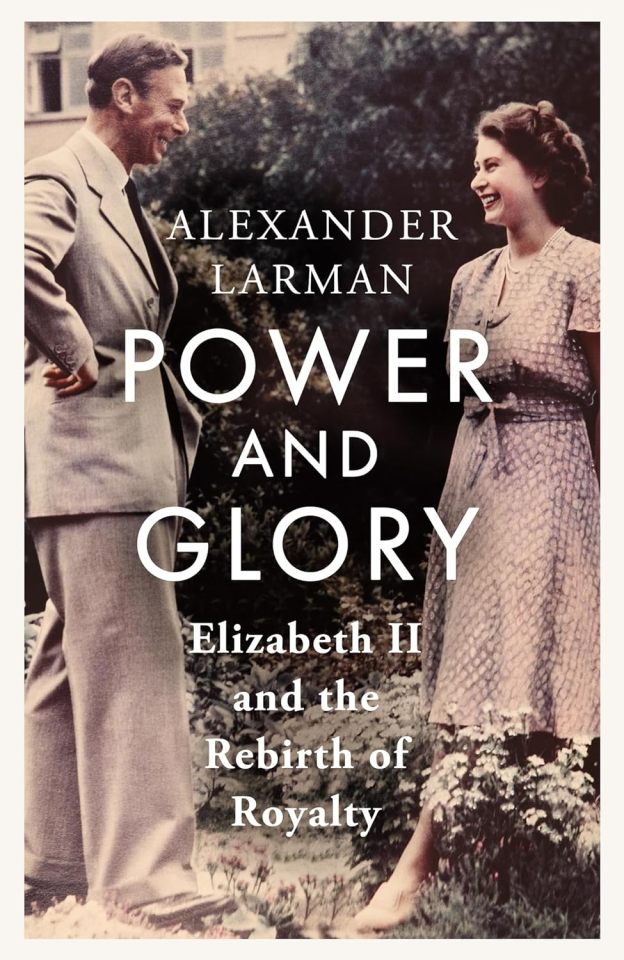
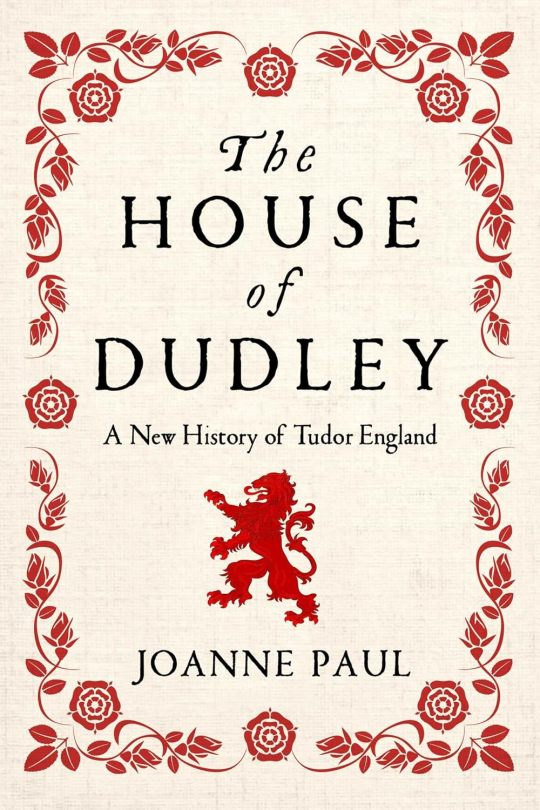
Power and Glory: Elizabeth II and the Rebirth of Royalty by Alexander Larman (Mar. 28, 2024) // The House of Dudley: A New History of Tudor England by Joanne Paul (new paperback version published Jan. 9, 2024)
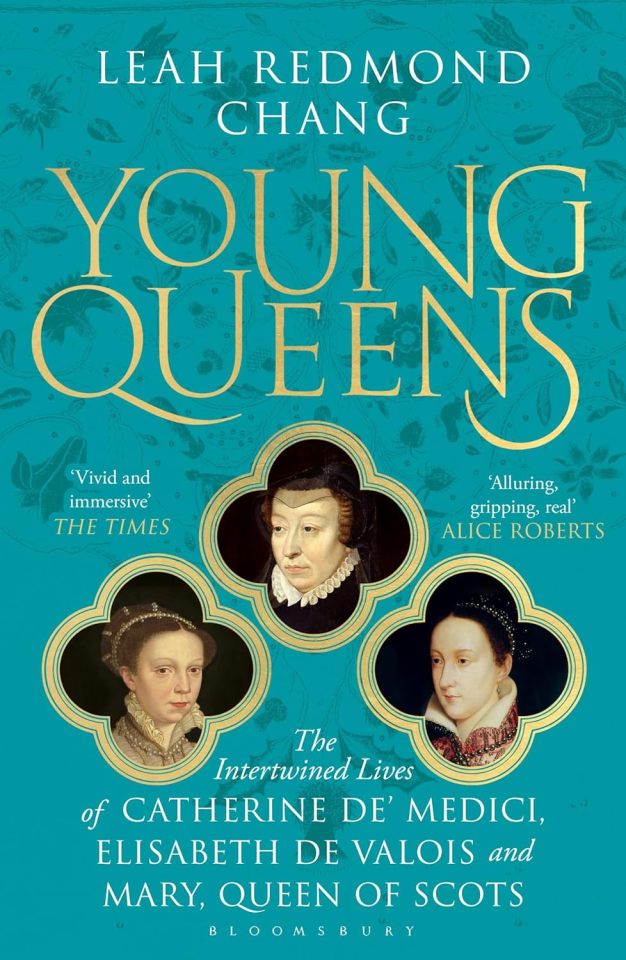
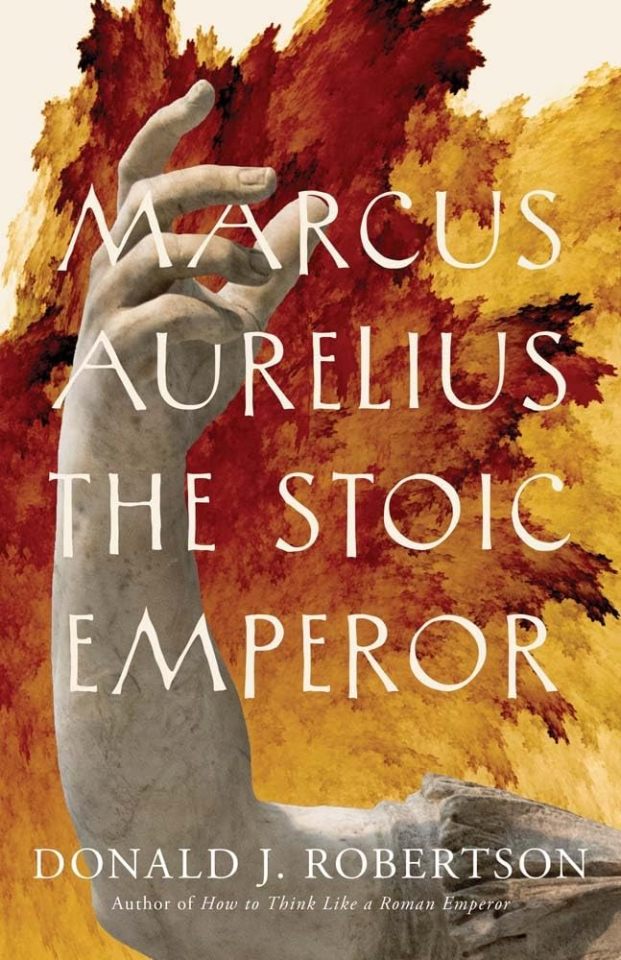
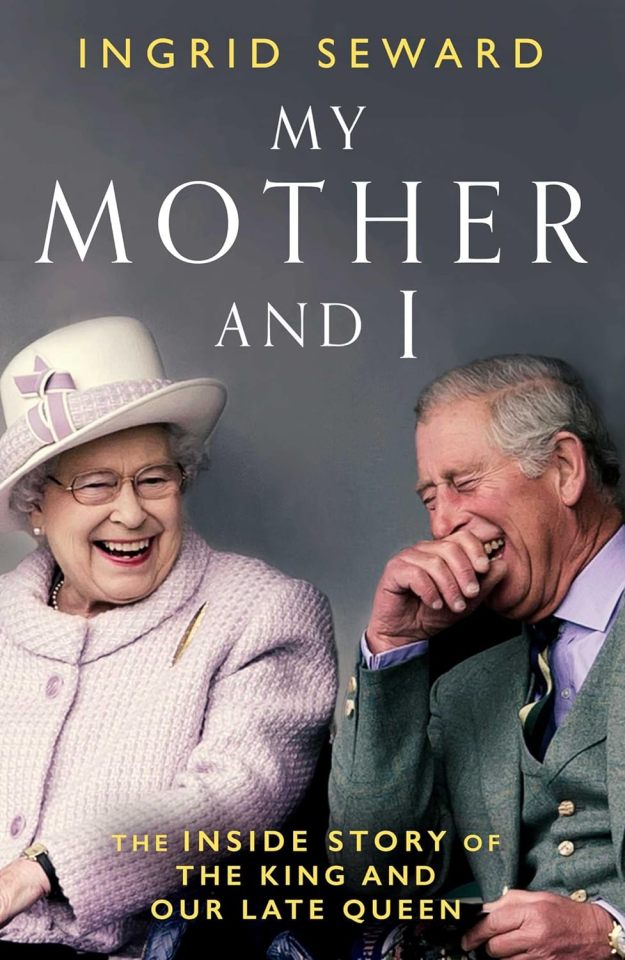
Young Queens: The Intertwined Lives of Catherine De' Medici, Elisabeth de Valois, and Mary, Queen of Scots by Leah Redmond Chang (new paperback version published Feb. 29, 2024) // Marcus Aurelius: The Stoic Emperor by Donald J. Robertson (Mar. 26, 2024) // My Mother and I by Ingrid Seward (Feb. 15, 2024)
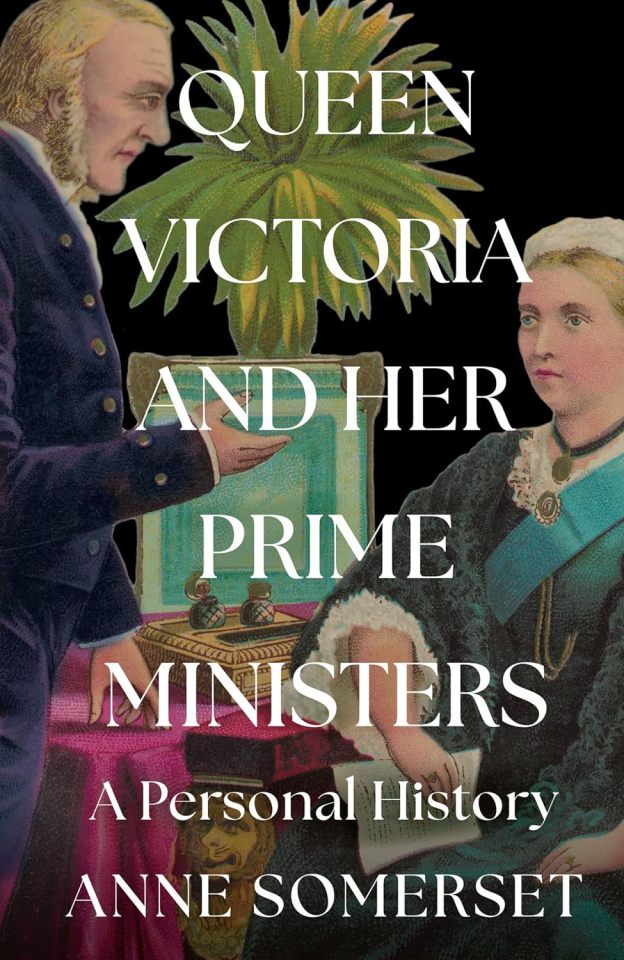
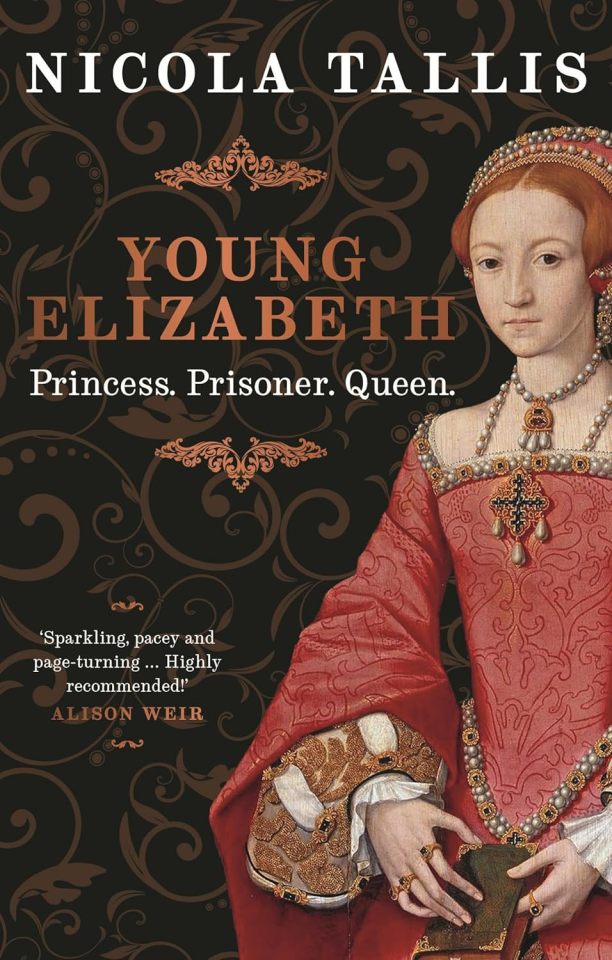
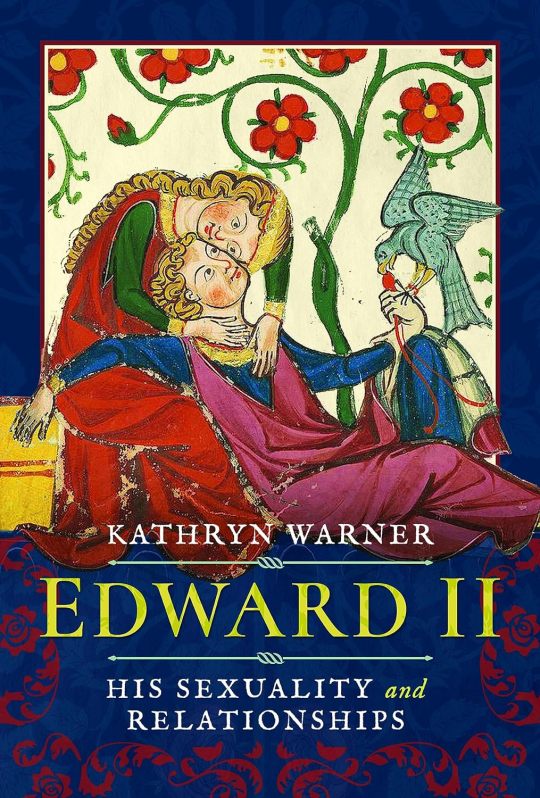
Queen Victoria and her Prime Ministers: A Personal History by Anne Somerset (Mar. 28, 2024) // Young Elizabeth: Princess. Prisoner. Queen. by Nicola Tallis (Feb. 29, 2024) // Edward II: His Sexuality and Relationships by Kathryn Warner (Mar. 15, 2024)
#literature#affiliate links#catherine parr#anne boleyn#elizabeth i#valeria messalina#king charles iii#anne of york#elizabeth of york#margaret of york#queen elizabeth ii#catherine de medici#isabel de valois#mary queen of scots#marcus aurelius#queen victoria#edward ii
34 notes
·
View notes
Text
Milk baths and bad smells








#korekiyo shinguji#kirumi tojo#cruise ship au#danganronpa ask blog#There are legends that Cleopatra bathed in goat milk daily for her complexion. These legends have not been confirmed and some historians be-#lieve that Roman Empress Poppaea (wife of Nero) set this bathing fashion after Cleopatra's death.#Queens Catherine Parr and later Elizabeth I of England bathed in milk in the belief that it would make their skin appear more youthful and#pale.Tincture of benzoin was also referred to as a 'milk bath' in the United States in the 1800s#which could in some cases be confused#for baths of cow milk#also popular at the time. There are references to cows milk as a bath technique found in India in the 1800s in#“Fifty-one years of Victorian life” by Margaret Elizabeth Child Villiers#Countess of Jersey. In the early 1900s#singer and Broadway star#Anna Held was reported to bathe in milk daily. She was later quoted as having bathed in milk two times a week when living in Paris#finding#it difficult to do so while traveling. Her husband Florenz Ziegfeld Jr. later reported to the press that she bathed in milk daily and set up#photo shoots so that reporters could photograph the milk being delivered to her. A buttermilk bath was also a common historical bathing#technique for show animals and remains in practice today (such as for pigs and dogs).#- That's Korekiyos Rambling (it's from Wikipedia)
19 notes
·
View notes
Text
25 August 1544: The ‘Quene Regente’ writes Henry VIII
[Endorsed] The queen’s Grace to the King’s majesty 25 August 1544 [Addressed] To the King’s most excellency majesty Pleaseth it your majesty to be advertised: albeit I had at this present none occurrences of importance to be signified unto your highness, your realm being, thanks to almighty God, in very good order and quiet: yet, foreasmuch as Richard Higham is at this time dispatched hence…

View On WordPress
#25 august 1544#catherine parr#henry viii#janel mueller#katherine parr#letter from Katherine parr#letter from the queen regent#letters of Katherine parr#Queen Catherine Parr#Queen Katherine Parr#Queen Regent#queen regent of the realm#quene regente Kateryn Parr
1 note
·
View note
Text
"What are the other queens to you?”
Aragon: Well, we didn’t get along great at first; It was rough patch to overcome considering our last lives, but with time I learned to value, respect and even love them. We are like family in a way.
Aragon: Oh, and there’s also Anne.
Seymour: Annoyances in the best days, my children in the worst ones.
Howard: The only adults I don’t feel like punching.
Howard, in a whisper: At least not usually.
Parr: Well, I wouldn’t say we’re friends. It’s sort of group of strangers I grew emotionally attatched to during difficult periods of my life.
Boleyn: Losers.
Anna: My bitches.
The others: Woof.
#six#six queens#the six wives of henry viii#six idiots#six the musical#six incorrect quotes#six the musical incorrect quotes#catherine of aragon#catherine parr#queen catherine#catherine howard#anne boleyn#anna of cleves#anna von kleve#anne of cleves#katherine howard#k howard#cathy parr#jane seymour#musical#musicals#broadway#six musical#my six posts
108 notes
·
View notes
Text

So I did the last two wives as well. People who follow me will have seen my Anne of Cleves already but I am reposting as part of this series for the completeness. :) Catherine Howard was relatively easy to do but the sleeves on her forearms were a little weird and I couldn't quite capture that with a black pen on plain paper. Likewise with Catherine Parr's black panels on her clothes with the gold threading, I had to settle for squiggles because these pieces take about 15-20 min each.


33 notes
·
View notes
Text
Six The Musical Headcanons - Kathrine Howard:
-AroAce, don’t fight me on this, I can totally understand and see the other head canons about this but to me thinking about Kat being in a romantic relationship in her second life or having crushes just does’t sound right because of all the romantic and intimate relationships she was pressured into in her past one (no I’m not saying she’s AroAce cause of the trauma, although it could possibly push her towards repulsed, I think it’s because she never really wanted a romantic intimate relationship all she cared about was just having a bond with someone or feeling loved or important or a place in life)
-Once she was reincarnated, I totally head canon that it wasn’t Anne she got close to first but rather Jane (not counting Anna who she already knew), Anne was probably a little too overwhelming for Kat first also including all the screaming matches she probably got into with Catalina. Jane with her maternal instincts probably slowly but surely drifted to the scared 17 year old to offer some help and Kat who was still shy and scared quickly got attached to the maternal figure
-Anne definitely got close to Kat just later when everyone ended calming the frick down, or in Annes case finally letting the chaotic side. Very common conception but Anne makes the chaos and Kat helps her out with it, the beheaded cousin just became the trouble and chaos cousins
-PTSD, I know no one will argue me on this one, the repeated reoccurrence of such traumatic events for Kat having happened to her by 4 different people, definitely made the girl come with scars into her next life.
-Nightmares, I know I also won’t be argued about this one, most of the queen household is commonly plagued by nightmares especially Kat, who commonly ends up in Jane’s or Anne’s room in the middle of the night if the other queens don’t find her first
-History nerd, with all the historical facts she knows in the musical, I like to imagine in my head that when it’s her turn to chose something to watch for queen movie nights, she chooses this intense historical documentaries with the guy with the British accent in the background
-She hides behind Jane or a different queen if Jane isn’t present when she’s anxious (or if a man is too close for her comfort)
-Hates being treated like a child, sometimes the queens can mistake her need for extra help as a need to smother her which Kat hates. But all the queens have a talk about this and they agree to give her space and remember that she’s an equal. (Although Kat doesn’t complain about all the extra attention she gets from Jane)
-Really enjoys hot chocolate, Jane makes sure to always keep it stocked because the last time when Kat ran out it was not pretty
-Yes I’m all about mother figure Jane to Kat, but I’m also all about Older sister Figure Anne, and other mother Catalina to Kat because Kat deserves all the love and positive older figures
-Kat has everyone wrapped around her finger even though she doesn’t completely understand it, she cried once in front of everyone and magically a pile of stuffed animals appeared in her room (they were from Cathy and Catalina)
-Kat also enjoys reading (though not nearly as much as Cathy) but will sometimes have little book clubs or talks with Cathy cause Cathy wants someone to talk about the books with and Kat is more than happy to indulge
-Once Kat warms up to everyone she becomes the resident cuddler, clinging to any unsuspecting queen in the household, even Catalina, who the first time initially almost shoved Kat off but with the look of adoration in Kat’s eyes didn’t have the heart to do it
-During Six performances for All You Wanna Do, the first time a swing performed with them, Kat shoved them off before the given beat and almost had to run offstage from the panic (although was able to last until Mega Six, where she got lots of Hugs, reassurances, and help after from her family and the swing even)
Thats all for today about the pink queen 🩷🩷🩷
#six#six the musical#six head canons#kathrine howard#katheryn howard#kat howard#kathryn howard#katherine howard#katherine howard my beloved#the pink queen#katherine howard head canons#mom friend jane#jane seymour#anne boleyn#anna von kleve#anna of cleves#catalina de aragon#catherine of aragon#catherine parr#cathy parr
16 notes
·
View notes
Text




Elizabeth: Is my father often angry with you?
(Firebrand, 2024)
16 notes
·
View notes